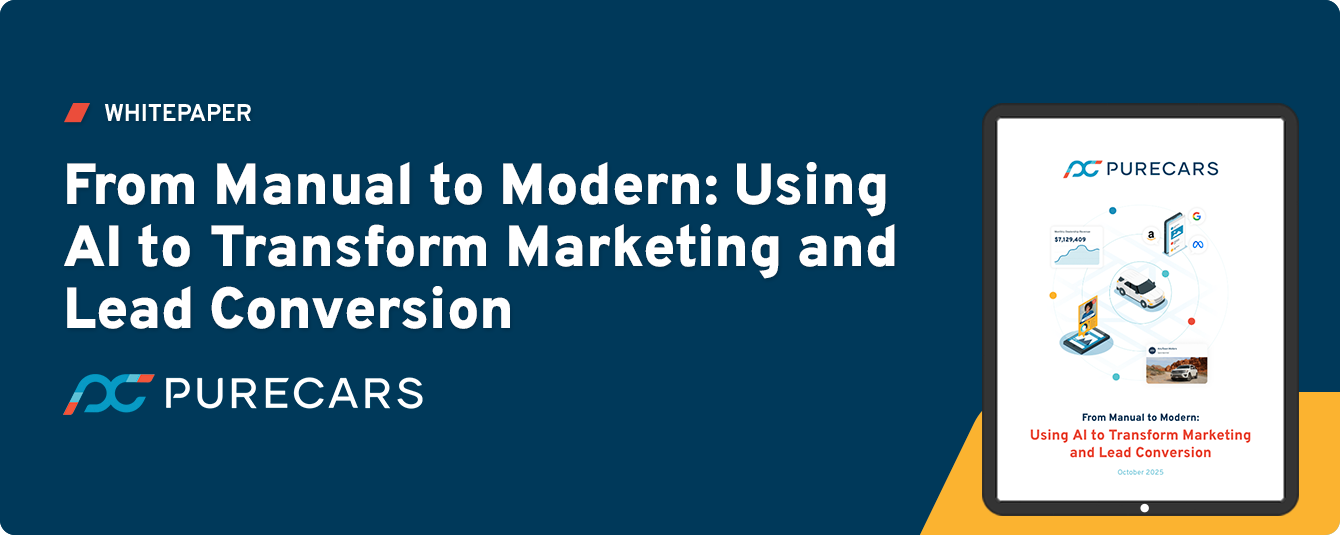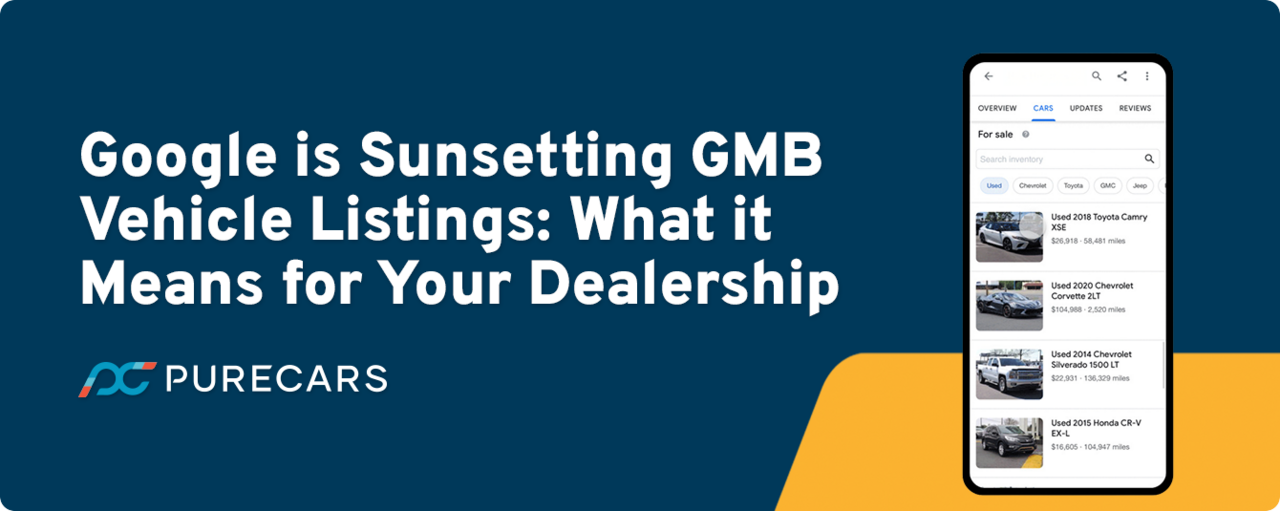PURE Strategy Overview
.png)
PURE Strategy, co-hosted by PureCars and Google in Austin this September, was a pivotal gathering for automotive industry leaders and innovators. The event offered a comprehensive look at current trends, emerging challenges, and future opportunities within the sector.
The Current Landscape of the Automotive Industry
The automotive market is experiencing notable shifts in inventory and consumer behavior. Inventory levels, while slightly down due to seasonal factors, remain high halfway through 2024. A significant change is the reduced impact of limited inventory, which has moved from being a top business challenge to the seventh position. This shift reflects the industry’s adaptation to previous constraints.
Luxury sport vehicles are seeing a remarkable surge, with around 70% year-over-year increases in inventory. However, other segments within the luxury category are growing at a more moderate pace. In contrast, the demand for electric vehicles is cooling, with Tesla’s sales experiencing a decline. This cooling demand has intensified competition among automakers in a shrinking market. Conversely, hybrids are enjoying a resurgence, buoyed by more favorable pricing compared to fully electric vehicles.
Evolving Consumer Behavior
Consumer behavior in the automotive space has evolved significantly. Today, 69% of automotive consumers are considering a broader range of brands and options than they did four years ago. Additionally, 68% are open to exploring new brands they haven’t tried before. This shift indicates a growing trend towards multi-brand shopping, making it increasingly difficult for individual brands to stand out. Over half of consumers perceive that auto brands offer similar options, highlighting the challenge of differentiation.
The Role of Digital Media
Digital media continues to play a crucial role in shaping automotive consumer decisions. YouTube, in particular, has become an indispensable platform. More than half of automotive consumers are using YouTube more frequently than they did four years ago, underscoring its importance in the decision-making process. Google remains a key resource for automotive information, with its Performance Max campaigns utilizing advanced AI to optimize ad placements and targeting. This approach helps advertisers maximize ROI and adapt to changing consumer trends effectively.
Adapting to Changing Trends
The path to purchase for automotive consumers has grown more complex. Search and video are now the top digital research tools, with a clear shift towards increased digital marketing spending by dealers. Many dealers are recognizing the need to enhance their digital presence and are planning to allocate more of their budgets to digital channels.
Media consumption is also undergoing a transformation. YouTube has emerged as a dominant force in TV viewership, accounting for one out of every ten minutes watched on TV screens. This shift highlights the growing influence of online platforms over traditional TV. With YouTube reaching 70.7% of people in the US, advertisers must adapt their strategies to align with changing media consumption patterns.
Conclusion
PURE Strategy highlighted the dynamic nature of the automotive industry and the need for businesses to stay agile. As inventory trends, consumer preferences, and digital media consumption evolve, automotive companies must embrace new strategies and technologies. Leveraging advanced tools like Google’s Performance Max and focusing on platforms like YouTube will be essential for engaging with today’s increasingly sophisticated consumer base.
Stay tuned for more updates as we continue to explore these exciting developments in the automotive space.
Book a meeting with us

PURE Strategy Overview
PURE Strategy, co-hosted by PureCars and Google in Austin this September, was a pivotal gathering for automotive industry leaders and innovators. The event offered a comprehensive look at current trends, emerging challenges, and future opportunities within the sector.
The Current Landscape of the Automotive Industry
The automotive market is experiencing notable shifts in inventory and consumer behavior. Inventory levels, while slightly down due to seasonal factors, remain high halfway through 2024. A significant change is the reduced impact of limited inventory, which has moved from being a top business challenge to the seventh position. This shift reflects the industry’s adaptation to previous constraints.
Luxury sport vehicles are seeing a remarkable surge, with around 70% year-over-year increases in inventory. However, other segments within the luxury category are growing at a more moderate pace. In contrast, the demand for electric vehicles is cooling, with Tesla’s sales experiencing a decline. This cooling demand has intensified competition among automakers in a shrinking market. Conversely, hybrids are enjoying a resurgence, buoyed by more favorable pricing compared to fully electric vehicles.
Evolving Consumer Behavior
Consumer behavior in the automotive space has evolved significantly. Today, 69% of automotive consumers are considering a broader range of brands and options than they did four years ago. Additionally, 68% are open to exploring new brands they haven’t tried before. This shift indicates a growing trend towards multi-brand shopping, making it increasingly difficult for individual brands to stand out. Over half of consumers perceive that auto brands offer similar options, highlighting the challenge of differentiation.
The Role of Digital Media
Digital media continues to play a crucial role in shaping automotive consumer decisions. YouTube, in particular, has become an indispensable platform. More than half of automotive consumers are using YouTube more frequently than they did four years ago, underscoring its importance in the decision-making process. Google remains a key resource for automotive information, with its Performance Max campaigns utilizing advanced AI to optimize ad placements and targeting. This approach helps advertisers maximize ROI and adapt to changing consumer trends effectively.
Adapting to Changing Trends
The path to purchase for automotive consumers has grown more complex. Search and video are now the top digital research tools, with a clear shift towards increased digital marketing spending by dealers. Many dealers are recognizing the need to enhance their digital presence and are planning to allocate more of their budgets to digital channels.
Media consumption is also undergoing a transformation. YouTube has emerged as a dominant force in TV viewership, accounting for one out of every ten minutes watched on TV screens. This shift highlights the growing influence of online platforms over traditional TV. With YouTube reaching 70.7% of people in the US, advertisers must adapt their strategies to align with changing media consumption patterns.
Conclusion
PURE Strategy highlighted the dynamic nature of the automotive industry and the need for businesses to stay agile. As inventory trends, consumer preferences, and digital media consumption evolve, automotive companies must embrace new strategies and technologies. Leveraging advanced tools like Google’s Performance Max and focusing on platforms like YouTube will be essential for engaging with today’s increasingly sophisticated consumer base.
Stay tuned for more updates as we continue to explore these exciting developments in the automotive space.
Book a meeting with us

.png)
More stories
Stay Connected
Subscribe for PureCars updates.
.svg)







